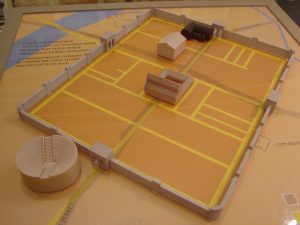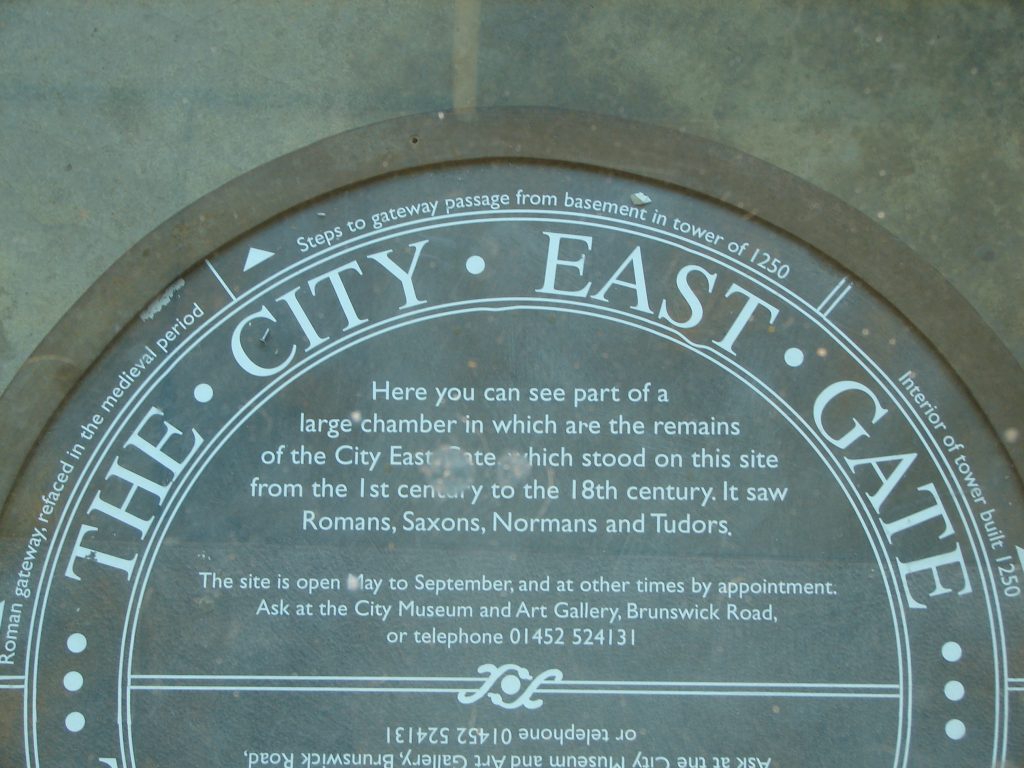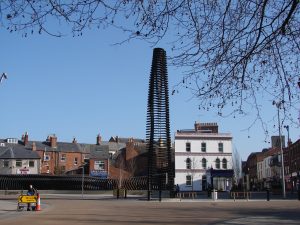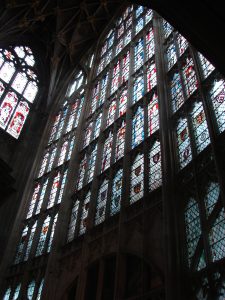The city of Gloucester was my choice for the setting of Memento Mori, the third novel in my Lady Apollonia West Country Mystery Series. Gloucester has a compelling history, going back to Roman times and the occupation of England under Emperor Claudius.
Cirencester in Gloucestershire became the site of a Roman fort shortly after the Roman invasion in AD 43. Concern about Welsh threats to the west meant that Gloucester soon became a site of defensive interest. The River Severn, flowing between Wales and England, is the longest in Great Britain. I have already written about the Severn because the village of Aust, site of my first novel, was the best location for a ferry to cross the Severn Estuary from England to Wales. Gloucester, to the north, became important to the Romans as the southernmost location where the Severn could be forded at low tide or bridged. The Romans built a fort there around AD 50 at Kingsholm, just north of the present city center of Gloucester.
In AD 68, the Romans moved their legion south to the present center of Gloucester which was known to them by the name Glevum. A model in the city museum pictured above, shows a rectangular Roman Glevum next to a branch of the River Severn that has since silted up.
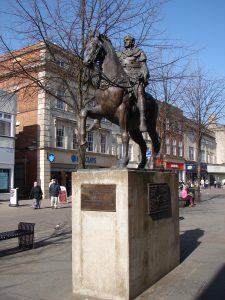 Around AD 96-98, the legion moved west to try to conquer Wales, but the Emperor Nerva promoted the fort to become the Nervan Colony of Glevum. A statue of the emperor along Southgate Street in Gloucester is pictured on the left. The status of being resident in a colonia conferred Roman citizenship on the local residents and second century Glevum contained many of the features we associate with Roman towns: baths, a forum, houses and villas with mosaic floors and piped water, and a basilica or town hall. The Roman street pattern was rectangular with streets leading directly to the gates. The location of the main gates and the streets connecting them to a central crossing changed little by medieval times. This leads to names like Westgate and Southgate Streets being referred to in my story of Memento Mori. The picture at the end of this post shows a sign in an excavation by Boots the Chemist, showing remnants of the Roman East Gate to the city.
Around AD 96-98, the legion moved west to try to conquer Wales, but the Emperor Nerva promoted the fort to become the Nervan Colony of Glevum. A statue of the emperor along Southgate Street in Gloucester is pictured on the left. The status of being resident in a colonia conferred Roman citizenship on the local residents and second century Glevum contained many of the features we associate with Roman towns: baths, a forum, houses and villas with mosaic floors and piped water, and a basilica or town hall. The Roman street pattern was rectangular with streets leading directly to the gates. The location of the main gates and the streets connecting them to a central crossing changed little by medieval times. This leads to names like Westgate and Southgate Streets being referred to in my story of Memento Mori. The picture at the end of this post shows a sign in an excavation by Boots the Chemist, showing remnants of the Roman East Gate to the city.
By the fourth century, Roman troops were being moved elsewhere, trade was disrupted, and eventually the Romans left Britain in AD 410. This void was initially filled by the local Celtic peoples who had been in Britain before the Roman occupation. Saxons invaded and came into the area a couple of centuries later and during this period, monasteries were founded, two of which are important in the story of Memento Mori, set in 1392. One of these was the Abbey of Saint Peter, the church of which became Gloucester Cathedral after the dissolution of the monasteries by King Henry VIII in the sixteenth century. This abbey was founded around AD 679. The other monastery important to my novel is Saint Oswald’s Priory, not far to the west of Saint Peter’s. It was founded in AD 890.
In my next posting, I will discuss these and other medieval buildings which either survive or have ruins still visible in the present day.
